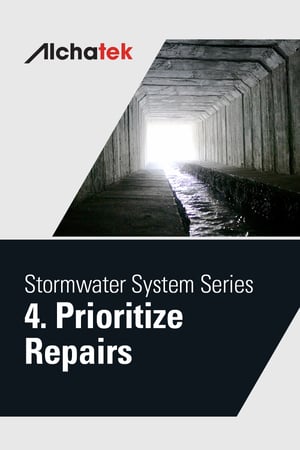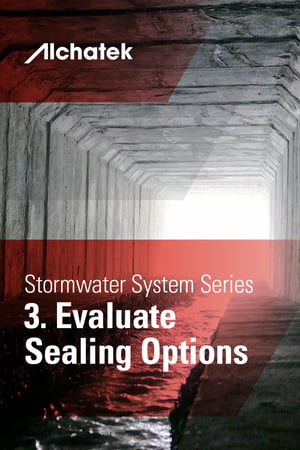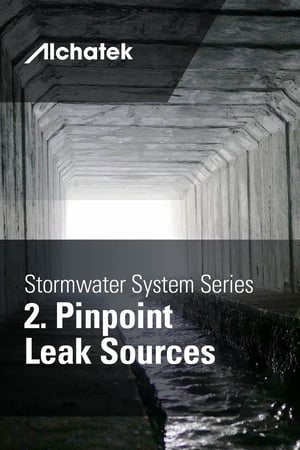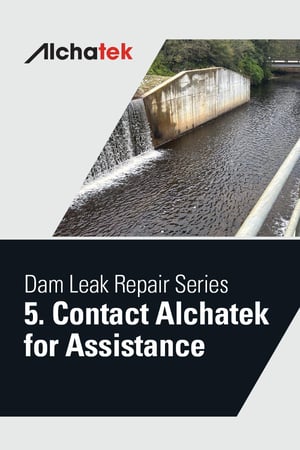
 Hydraulic inefficiency in stormwater systems can wreak havoc in urban settings, especially during times of heavy rainfall or storms. When stormwater systems become less effective in draining water, it increases the risk of localized flooding and may even contribute to infrastructure failure. The problem often boils down to leaks and cracks in crucial components like curb inlets, drop inlets, manholes, and culverts.
Hydraulic inefficiency in stormwater systems can wreak havoc in urban settings, especially during times of heavy rainfall or storms. When stormwater systems become less effective in draining water, it increases the risk of localized flooding and may even contribute to infrastructure failure. The problem often boils down to leaks and cracks in crucial components like curb inlets, drop inlets, manholes, and culverts.
Recognizing Symptoms
Identifying hydraulic inefficiency starts with a keen observation of several signs that indicate a system is not operating optimally. These symptoms may include but are not limited to, reduced flow rates, unexpected pooling of water near stormwater inlets, or even backups in areas where there was previously a smooth flow of water. Regular monitoring can help pinpoint these indicators and flag them for further investigation. This is a proactive step that can be taken to prevent inefficiencies from escalating into larger issues.
Role of Leaks and Cracks
Leaks and cracks in system components directly contribute to the reduction in hydraulic efficiency. For example, when a curb inlet has a crack, not only does it allow an unwanted inflow of sediment and debris, but it also reduces the capacity of the inlet to channel stormwater effectively. Similarly, leaks in manholes can lead to soil infiltration, adding unnecessary volume to the stormwater, thereby reducing the system's overall capacity. Each of these issues diminishes the stormwater system's efficiency, making it critical to address them promptly.
Analyzing Flow and Capacity
The key parameters that suffer due to leaks and cracks are the flow rate and capacity of the stormwater system. Flow rate refers to the speed at which water moves through the system, while capacity denotes how much water the system can handle at any given time. Reduced flow rates can slow down the drainage of water from streets, leading to surface pooling and flooding. On the other hand, diminished capacity means that the system becomes overwhelmed more quickly during heavy rainfall, exacerbating the problem. Maintenance teams should periodically measure these parameters to assess the health of the stormwater system.
Potential Consequences
The immediate consequences of ignoring hydraulic inefficiency can be severe. Reduced flow and capacity increase the risk of localized flooding, especially during heavy rainfall. This flooding can damage properties, disrupt traffic, and in extreme cases, pose risks to public safety. In addition, an inefficient stormwater system places extra strain on adjacent infrastructure, making them more susceptible to wear and tear, or even failure.
Solving the Issue with Polyurethane Grouts
One highly effective solution for sealing leaks in these crucial components is the use of polyurethane grouts. These grouts offer several advantages over traditional sealing methods. They can be applied with precision, allowing for targeted sealing of leaks and cracks. Once applied, polyurethane grouts expand to fill the gap, providing a watertight seal that prevents further leakage or infiltration. This in turn enhances the flow rate and capacity of the system, making it more efficient, especially during times when it is most needed, such as heavy rainfall or storms.
Actionable Steps for Maintenance Teams
Maintenance managers and teams can take several actionable steps to tackle the issue of hydraulic inefficiency effectively. Firstly, incorporate regular monitoring and inspections into the maintenance schedule to catch signs of inefficiency early. Secondly, prioritize the repair of leaks and cracks in components that are key to maintaining optimal flow rate and capacity. Utilize polyurethane grouts to seal these leaks (or hire a waterproofing specialist to do the work). Finally, after any repair, conduct a comprehensive assessment to ensure that the applied solutions have successfully restored the system’s hydraulic efficiency.
Reaping the Benefits
Taking timely action to fix hydraulic inefficiencies is not just about preventing immediate issues like flooding; it’s also an investment in the long-term durability and effectiveness of a city’s stormwater management infrastructure. A well-maintained system requires less emergency intervention, reduces maintenance costs in the long run, and most importantly, ensures the safety and well-being of the community it serves.
The Importance of Continuous Learning
For maintenance managers and teams, staying updated on the latest technologies and methods for addressing hydraulic inefficiency is essential. Training programs, workshops, and seminars offer valuable insights into new materials and techniques that could be more effective and cost-efficient. Polyurethane grouts are a testament to how advancements in materials science can offer superior solutions for age-old problems.
In summary, hydraulic inefficiency poses a significant challenge for stormwater systems, especially during periods of heavy rainfall. Recognizing the symptoms early, understanding the role of leaks and cracks, and choosing the most effective sealing methods like polyurethane grouts can make a significant difference and help to avoid costly emergency repairs. Actionable steps and a focus on continuous learning can go a long way in ensuring that a stormwater system operates at its peak efficiency, safeguarding communities from the risks of flooding and infrastructure failure.
Want more information on sealing leaks in municipal infrastructure?



 Managing stormwater infrastructure comes with unique challenges. At Alchatek, we want to help. Our team has extensive knowledge of innovative solutions for stormwater system repair and waterproofing.
Managing stormwater infrastructure comes with unique challenges. At Alchatek, we want to help. Our team has extensive knowledge of innovative solutions for stormwater system repair and waterproofing.



 Managing a diverse array of stormwater system components can be a daunting task. Maintenance managers must juggle curb inlets, drop inlets, manholes, and culverts, each with its unique set of issues and repair needs. Toss in a wide geographic coverage area, and the complexity escalates. Faced with limited resources and pressing timelines, how should a maintenance team prioritize which repairs to tackle first?
Managing a diverse array of stormwater system components can be a daunting task. Maintenance managers must juggle curb inlets, drop inlets, manholes, and culverts, each with its unique set of issues and repair needs. Toss in a wide geographic coverage area, and the complexity escalates. Faced with limited resources and pressing timelines, how should a maintenance team prioritize which repairs to tackle first?
 When it comes to sealing leaks in stormwater systems, one size does not fit all. Whether dealing with curb inlets, drop inlets, manholes, or culverts, the choice of sealing material plays a pivotal role in the success and longevity of the repair. Cementitious grouts and polyurethane grouts represent the main contenders in the field. Knowing when and where to use each is crucial for a sustainable solution.
When it comes to sealing leaks in stormwater systems, one size does not fit all. Whether dealing with curb inlets, drop inlets, manholes, or culverts, the choice of sealing material plays a pivotal role in the success and longevity of the repair. Cementitious grouts and polyurethane grouts represent the main contenders in the field. Knowing when and where to use each is crucial for a sustainable solution.
 Leaks in stormwater systems can be elusive, often manifesting their symptoms far from the actual point of origin. This is especially true for interconnected systems like manholes or box culverts, where water can travel significant distances before showing visible signs of a leak. Accurate identification of the leak source is crucial for any effective repair operation. Failure to correctly locate the leak can result in wasted time, resources, and ultimately, unsuccessful repair.
Leaks in stormwater systems can be elusive, often manifesting their symptoms far from the actual point of origin. This is especially true for interconnected systems like manholes or box culverts, where water can travel significant distances before showing visible signs of a leak. Accurate identification of the leak source is crucial for any effective repair operation. Failure to correctly locate the leak can result in wasted time, resources, and ultimately, unsuccessful repair.
 Hydraulic inefficiency in stormwater systems can wreak havoc in urban settings, especially during times of heavy rainfall or storms. When stormwater systems become less effective in draining water, it increases the risk of localized flooding and may even contribute to infrastructure failure. The problem often boils down to leaks and cracks in crucial components like curb inlets, drop inlets, manholes, and culverts.
Hydraulic inefficiency in stormwater systems can wreak havoc in urban settings, especially during times of heavy rainfall or storms. When stormwater systems become less effective in draining water, it increases the risk of localized flooding and may even contribute to infrastructure failure. The problem often boils down to leaks and cracks in crucial components like curb inlets, drop inlets, manholes, and culverts.
 Contractors specializing in chemical grouting in the northern United States are often constrained by the seasons when it comes to outdoor soil stabilization and slab lifting tasks. However, with strategic planning, they can also find profitable avenues to keep busy during winter.
Contractors specializing in chemical grouting in the northern United States are often constrained by the seasons when it comes to outdoor soil stabilization and slab lifting tasks. However, with strategic planning, they can also find profitable avenues to keep busy during winter.


 Effectively repairing and sealing leaks in dams requires specialized expertise and high-quality materials. At Alchatek, we have spent decades developing and manufacturing premium polyurethane grouts designed specifically for waterproofing and protecting critical infrastructure like dams.
Effectively repairing and sealing leaks in dams requires specialized expertise and high-quality materials. At Alchatek, we have spent decades developing and manufacturing premium polyurethane grouts designed specifically for waterproofing and protecting critical infrastructure like dams.
 When it comes to dam management, the focus often rests on structural integrity and operational efficiency. However, the environmental implications of dam leaks are equally critical. Leaks can lead to a range of downstream consequences, affecting not just human communities but also aquatic life and entire ecosystems.
When it comes to dam management, the focus often rests on structural integrity and operational efficiency. However, the environmental implications of dam leaks are equally critical. Leaks can lead to a range of downstream consequences, affecting not just human communities but also aquatic life and entire ecosystems.
 In the realm of dam management, energy efficiency often stands as a cornerstone of operational success. While dams serve a variety of functions, from water storage to flood control, the optimization of energy production remains a critical concern. Structural weaknesses, such as leaks and cracks, can significantly hamper a dam's ability to generate power, leading to increased operational costs and reduced effectiveness.
In the realm of dam management, energy efficiency often stands as a cornerstone of operational success. While dams serve a variety of functions, from water storage to flood control, the optimization of energy production remains a critical concern. Structural weaknesses, such as leaks and cracks, can significantly hamper a dam's ability to generate power, leading to increased operational costs and reduced effectiveness.
 Sediment accumulation in dams is a concern that often goes unnoticed until it becomes a significant problem. Over time, sediment carried by the water can settle at the bottom of the dam, reducing its storage capacity and affecting its functionality. This build-up can also lead to increased pressure on the dam structure, making it more susceptible to leaks and cracks.
Sediment accumulation in dams is a concern that often goes unnoticed until it becomes a significant problem. Over time, sediment carried by the water can settle at the bottom of the dam, reducing its storage capacity and affecting its functionality. This build-up can also lead to increased pressure on the dam structure, making it more susceptible to leaks and cracks.